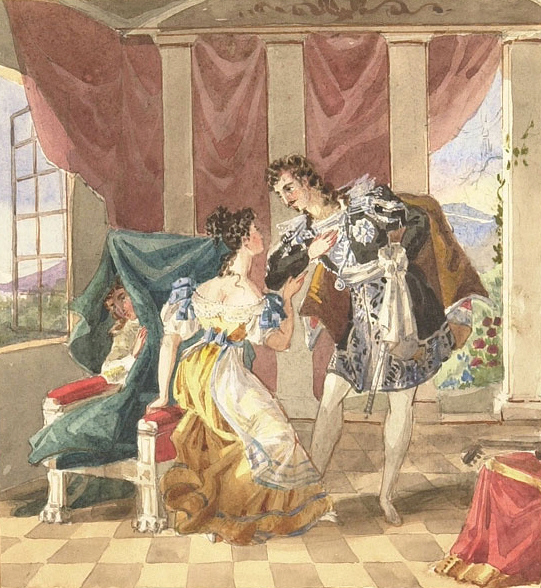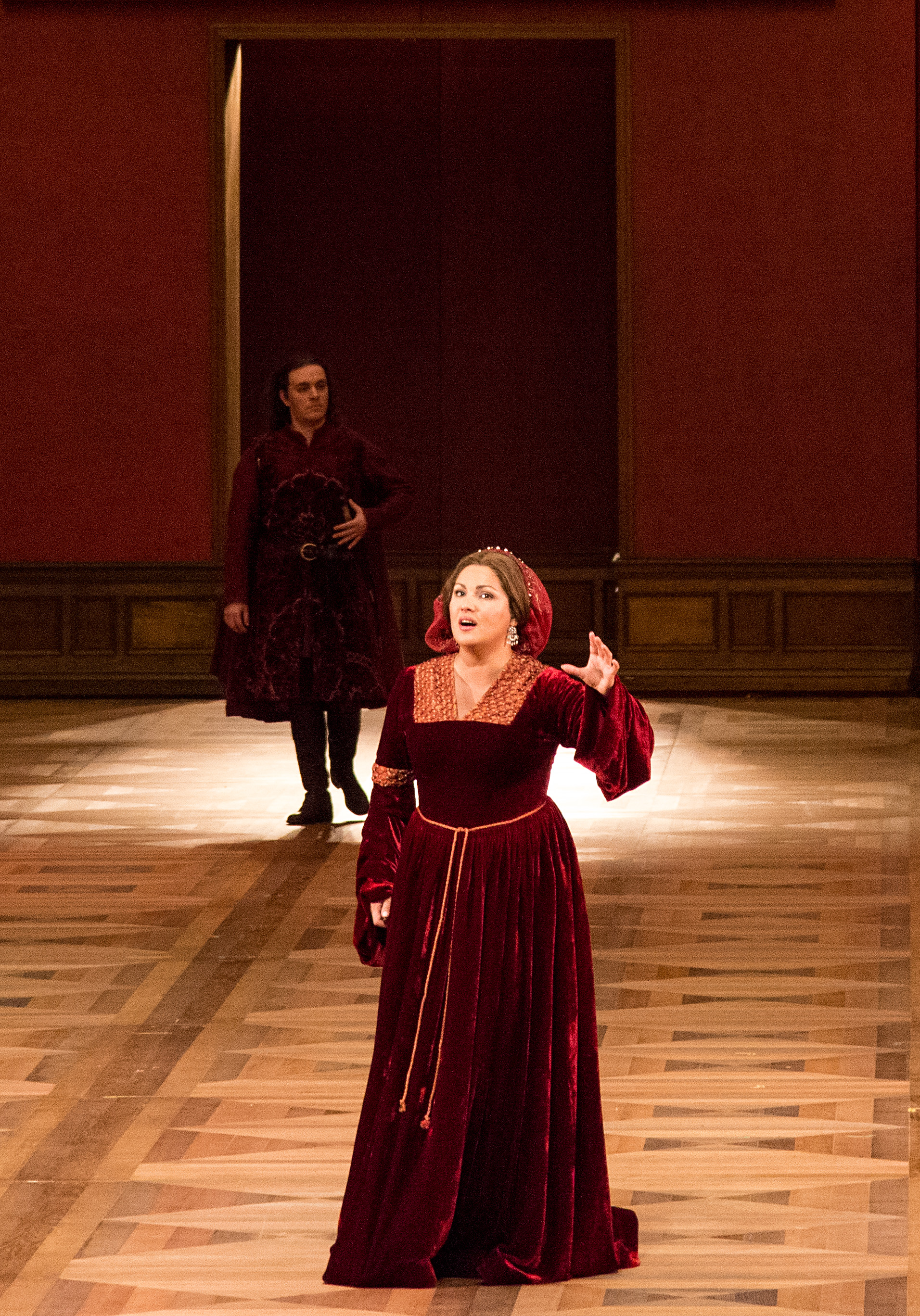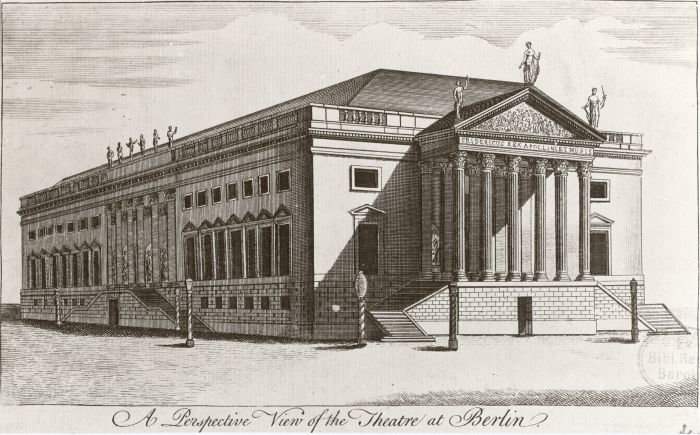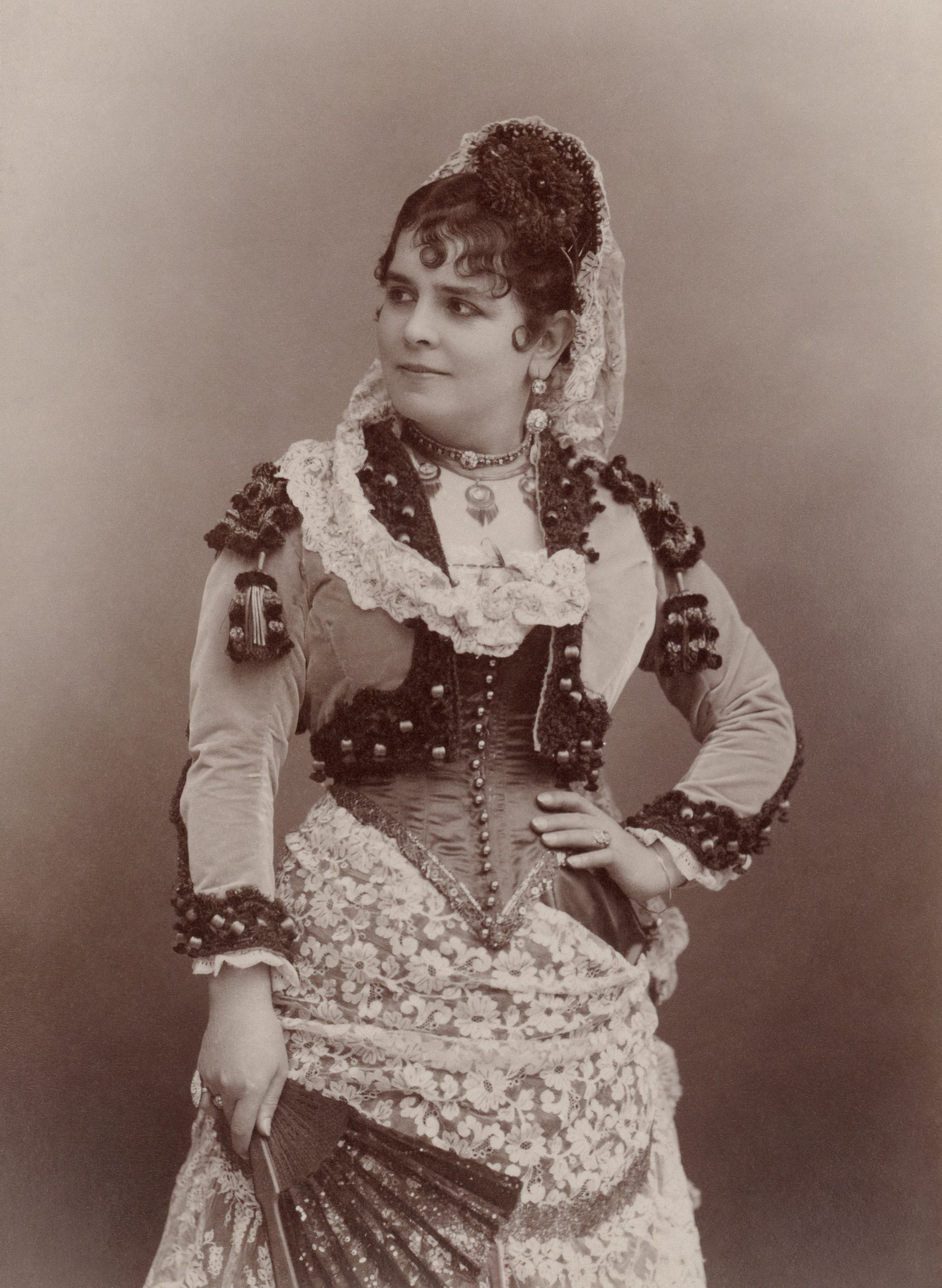|
Elisabeth Kulman
Elisabeth Kulman (born 28 June 1973) is an Austrian classical singer who has performed operatic roles in soprano, mezzo-soprano and contralto repertory. She has appeared at opera houses in Vienna and internationally. She has performed early operas such as Legrenzi's ''Il Giustino'' as well as new works, creating the role of Gora in the premiere of Reimann's ''Medea'' at the Vienna State Opera. She recorded Lieder by Mussorgsky, Bach's ''Christmas Oratorio'' with Peter Schreier and Beethoven's ''Missa solemnis'' with Nikolaus Harnoncourt. From 2015, she has focused on concert singing. Career Born in Oberpullendorf, Kulman achieved the Matura in 1991. She studied Russian, and musicology. She was a choir singer in several notable choirs in Vienna, including Arnold Schoenberg Chor, Concentus Vocalis Wien, Wiener Singakademie, Wiener Kammerchor and . She began voice studies in 1995 at the Universität für Musik und darstellende Kunst Wien with Helena Lazarska. She completed her stud ... [...More Info...] [...Related Items...] OR: [Wikipedia] [Google] [Baidu] |
Oberpullendorf
Oberpullendorf (; hr, Gornja Pulja or ; hu, Felsőpulya) is a town in Burgenland, Austria. It is the administrative center of the district of Oberpullendorf. Geography Oberpullendorf is a municipality in the middle of the Burgenland. It consists of two united communities: Mitterpullendorf and Oberpullendorf, and is also the capital of the same called administrative district of Oberpullendorf. It is surrounded by the communities of Stoob to the north, Großwarasdorf to the east, Frankenau-Unterpullendorf to the south, and Steinberg-Dörfl to the west. The Stooberbach crosses the municipality from north-west to the south-east. History The district of Oberpullendorf has been populated since the Neolithic age. During the early Iron Age the district was a flourishing iron industrial area. Josef Polatschek, a gardener and regional researcher, mapped several ancient iron extraction sites in the district. Oberpullendorf was firstly documented in 1225 as a Hungarian frontier gu ... [...More Info...] [...Related Items...] OR: [Wikipedia] [Google] [Baidu] |
Le Nozze Di Figaro
''The Marriage of Figaro'' ( it, Le nozze di Figaro, links=no, ), K. 492, is a ''commedia per musica'' (opera buffa) in four acts composed in 1786 by Wolfgang Amadeus Mozart, with an Italian libretto written by Lorenzo Da Ponte. It premiered at the Burgtheater in Vienna on 1 May 1786. The opera's libretto is based on the 1784 stage comedy by Pierre Beaumarchais, ''La folle journée, ou le Mariage de Figaro'' ("The Mad Day, or The Marriage of Figaro"). It tells how the servants Figaro and Susanna succeed in getting married, foiling the efforts of their philandering employer Count Almaviva to seduce Susanna and teaching him a lesson in fidelity. Considered one of the greatest operas ever written, it is a cornerstone of the repertoire and appears consistently among the top ten in the Operabase list of most frequently performed operas. In 2017, BBC News Magazine asked 172 opera singers to vote for the best operas ever written. ''The Marriage of Figaro'' came in first out of ... [...More Info...] [...Related Items...] OR: [Wikipedia] [Google] [Baidu] |
Schwetzingen Festival
The Schwetzingen Festival (German: Schwetzinger Festspiele, now Schwetzinger SWR Festspiele) is an early summer festival of opera and other classical music presented each year from May to early June in Schwetzingen, Germany. In 1952, the broadcaster Süddeutscher Rundfunk founded the festival in the Schwetzingen area. It is located in a beautiful 250-year-old palace and park, Schwetzingen Castle, near the famous city of Heidelberg. The main venue is the historic Schlosstheater Schwetzingen. Nowadays, the successor organization is the Südwestrundfunk (SWR) and it organises many international concerts and music theatre events every year. List of major premieres and rediscoveries One of the festival's characteristics is the world premiere of a new opera, as well as at least one rediscovered opera from former centuries, performed on period instruments. Concerts Concerts have featured well-known artists such as Gidon Kremer, Jorge Bolet and Cecilia Bartoli, as well as young a ... [...More Info...] [...Related Items...] OR: [Wikipedia] [Google] [Baidu] |
Historically Informed Performance
Historically informed performance (also referred to as period performance, authentic performance, or HIP) is an approach to the performance of classical music, which aims to be faithful to the approach, manner and style of the musical era in which a work was originally conceived. It is based on two key aspects: the application of the stylistic and technical aspects of performance, known as performance practice; and the use of period instruments which may be reproductions of historical instruments that were in use at the time of the original composition, and which usually have different timbre and temperament from their modern equivalents. A further area of study, that of changing listener expectations, is increasingly under investigation. Given no sound recordings exist of music before the late 19th century, historically informed performance is largely derived from musicological analysis of texts. Historical treatises, pedagogic tutor books, and concert critiques, as well a ... [...More Info...] [...Related Items...] OR: [Wikipedia] [Google] [Baidu] |
Elīna Garanča
Elīna Garanča (born 16 September 1976) is a Latvian mezzo-soprano. She began to study singing in her hometown of Riga in 1996 and continued her studies in Vienna and in the United States. By 1999 she had won first place in a significant competition in Finland and had begun a career in Europe. Worldwide engagements followed her 2003 Salzburg Festival appearances. Early life and education Elīna Garanča was born in the Latvian city of Riga into a musical family: her father was a choral director, and her mother Anita was a lieder singer, a professor at the Latvian Academy of Music, an associate professor at the Latvian Academy of Culture, a vocal music teacher at the Latvian National Opera, and also a private voice tutor. Career in opera She entered the Latvian Academy of Music in 1996 to study singing with Sergej Martinov. She continued her studies in Vienna with Irina Gavrilovich and in the United States with Virginia Zeani. Garanča began her professional career at the ... [...More Info...] [...Related Items...] OR: [Wikipedia] [Google] [Baidu] |
Anna Netrebko
Anna Yuryevna Netrebko (russian: Анна Юрьевна Нетребко; born 18 September 1971) is an Austrian operatic soprano with an active international career and performed prominently at the Salzburg Festival, Metropolitan Opera, Vienna State Opera, and The Royal Opera. Discovered and promoted by Valery Gergiev, she began her career at the Mariinsky Theatre, collaborating with the conductor in the theater and performances elsewhere. She was noticed globally after playing Donna Anna in Mozart's ''Don Giovanni'' at the 2002 Salzburg Festival. She had been known for her rendition of lyric and coloratura soprano roles but proceeded into heavier 19th-century romantic roles, such as Leonora in ''Il trovatore'' and the role of Lady Macbeth in ''Macbeth''. Since 2016, she has turned her focus to verismo repertoire. In 2015 she married Azerbaijani tenor Yusif Eyvazov, with whom she has been performing frequently since. She has been an exclusive artist for Deutsche Grammophon ... [...More Info...] [...Related Items...] OR: [Wikipedia] [Google] [Baidu] |
Anna Bolena
''Anna Bolena'' is a tragic opera (''tragedia lirica'') in two acts composed by Gaetano Donizetti. Felice Romani wrote the Italian libretto after Ippolito Pindemonte's ''Enrico VIII ossia Anna Bolena'' and Alessandro Pepoli's ''Anna Bolena'', both recounting the life of Anne Boleyn, the second wife of England's King Henry VIII. It is one of four operas by Donizetti dealing with the Tudor period in English history—in composition order, '' Il castello di Kenilworth'' (1829), ''Anna Bolena'' (1830), ''Maria Stuarda'' (named for Mary, Queen of Scots, it appeared in different forms in 1834 and 1835), and '' Roberto Devereux'' (1837, named for a putative lover of Queen Elizabeth I of England). The leading female characters of the latter three operas are often referred to as "the Three Donizetti Queens." ''Anna Bolena'' premiered on 26 December 1830 at the Teatro Carcano in Milan, to "overwhelming success." Weinstock notes that only after this success did Donizetti's teacher, ... [...More Info...] [...Related Items...] OR: [Wikipedia] [Google] [Baidu] |
Staatsoper Berlin
The (), also known as the Berlin State Opera (german: Staatsoper Berlin), is a listed building on Unter den Linden boulevard in the historic center of Berlin, Germany. The opera house was built by order of Prussian king Frederick the Great from 1741 to 1743 according to plans by Georg Wenzeslaus von Knobelsdorff in the Palladian style. Damaged during the Allied bombing in World War II, the former Royal Prussian Opera House was rebuilt from 1951 to 1955 as part of the Forum Fridericianum square. Nicknamed ''Lindenoper'' in Berlin, it is "the first theater anywhere to be, by itself, a prominent, freestanding monumental building in a city." History Names Originally called the ''Königliche Oper'' (Royal Opera) from 1743, it was renamed as the ''Preußische Staatsoper'' (Prussian State Opera) in 1919, then as the ''Deutsche Staatsoper '' in 1955. Until 1990, it housed the state opera of East Germany. Since 1990, it is officially called the ''Staatsoper Unter den Linden'' (State O ... [...More Info...] [...Related Items...] OR: [Wikipedia] [Google] [Baidu] |
Carmen
''Carmen'' () is an opera in four acts by the French composer Georges Bizet. The libretto was written by Henri Meilhac and Ludovic Halévy, based on the novella of the same title by Prosper Mérimée. The opera was first performed by the Opéra-Comique in Paris on 3 March 1875, where its breaking of conventions shocked and scandalised its first audiences. Bizet died suddenly after the 33rd performance, unaware that the work would achieve international acclaim within the following ten years. ''Carmen'' has since become one of the most popular and frequently performed operas in the classical canon; the " Habanera" from act 1 and the "Toreador Song" from act 2 are among the best known of all operatic arias. The opera is written in the genre of ''opéra comique'' with musical numbers separated by dialogue. It is set in southern Spain and tells the story of the downfall of Don José, a naïve soldier who is seduced by the wiles of the fiery gypsy Carmen. José abandons his childho ... [...More Info...] [...Related Items...] OR: [Wikipedia] [Google] [Baidu] |
Die Fledermaus
' (, ''The Flittermouse'' or ''The Bat'', sometimes called ''The Revenge of the Bat'') is an operetta composed by Johann Strauss II to a German libretto by Karl Haffner and Richard Genée, which premiered in 1874. Background The original literary source for ' was ' (''The Prison''), a farce by German playwright Julius Roderich Benedix that premiered in Berlin in 1851. On 10 September 1872, a three-act French vaudeville play by Henri Meilhac and Ludovic Halévy, ', loosely based on the Benedix farce, opened at the Théâtre du Palais-Royal. Meilhac and Halévy had provided several successful libretti for Offenbach and ''Le Réveillon'' later formed the basis for the 1926 silent film '' So This Is Paris'', directed by Ernst Lubitsch. Meilhac and Halévy's play was soon translated into German by Karl Haffner (1804–1876), at the instigation of Max Steiner, as a non-musical play for production in Vienna. The French custom of a New Year's Eve ''réveillon'', or supper part ... [...More Info...] [...Related Items...] OR: [Wikipedia] [Google] [Baidu] |
Opéra National De Paris
The Paris Opera (, ) is the primary opera and ballet company of France. It was founded in 1669 by Louis XIV as the , and shortly thereafter was placed under the leadership of Jean-Baptiste Lully and officially renamed the , but continued to be known more simply as the . Classical ballet as it is known today arose within the Paris Opera as the Paris Opera Ballet and has remained an integral and important part of the company. Currently called the , it mainly produces operas at its modern 2,723-seat theatre Opéra Bastille which opened in 1989, and ballets and some classical operas at the older 1,979-seat Palais Garnier which opened in 1875. Small scale and contemporary works are also staged in the 500-seat Amphitheatre under the Opéra Bastille. The company's annual budget is in the order of 200 million euros, of which €100M come from the French state and €70M from box office receipts. With this money, the company runs the two houses and supports a large permanent staff, ... [...More Info...] [...Related Items...] OR: [Wikipedia] [Google] [Baidu] |
Orfeo Ed Euridice
' (; French: '; English: ''Orpheus and Eurydice'') is an opera composed by Christoph Willibald Gluck, based on the myth of Orpheus and set to a libretto by Ranieri de' Calzabigi. It belongs to the genre of the '' azione teatrale'', meaning an opera on a mythological subject with choruses and dancing. The piece was first performed at the Burgtheater in Vienna on 5 October 1762, in the presence of Empress Maria Theresa. ''Orfeo ed Euridice'' is the first of Gluck's "reform" operas, in which he attempted to replace the abstruse plots and overly complex music of ''opera seria'' with a "noble simplicity" in both the music and the drama. The opera is the most popular of Gluck's works, and was one of the most influential on subsequent German operas. Variations on its plot—the underground rescue mission in which the hero must control, or conceal, his emotions—can be found in Mozart's ''The Magic Flute'', Beethoven's ''Fidelio'', and Wagner's ''Das Rheingold''. Though originally ... [...More Info...] [...Related Items...] OR: [Wikipedia] [Google] [Baidu] |









.jpg)